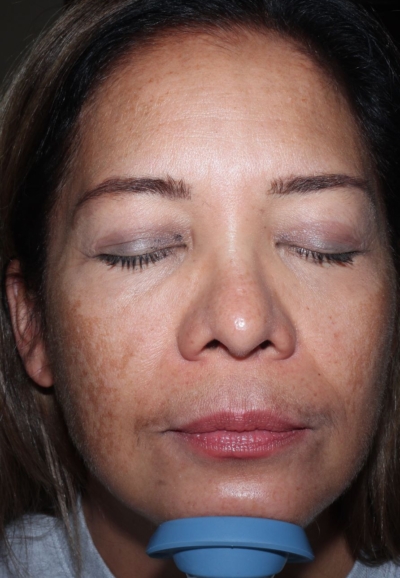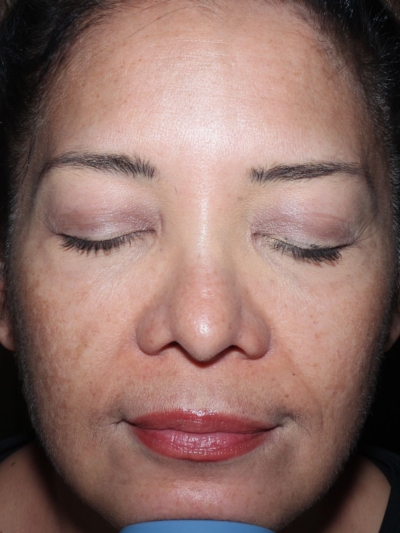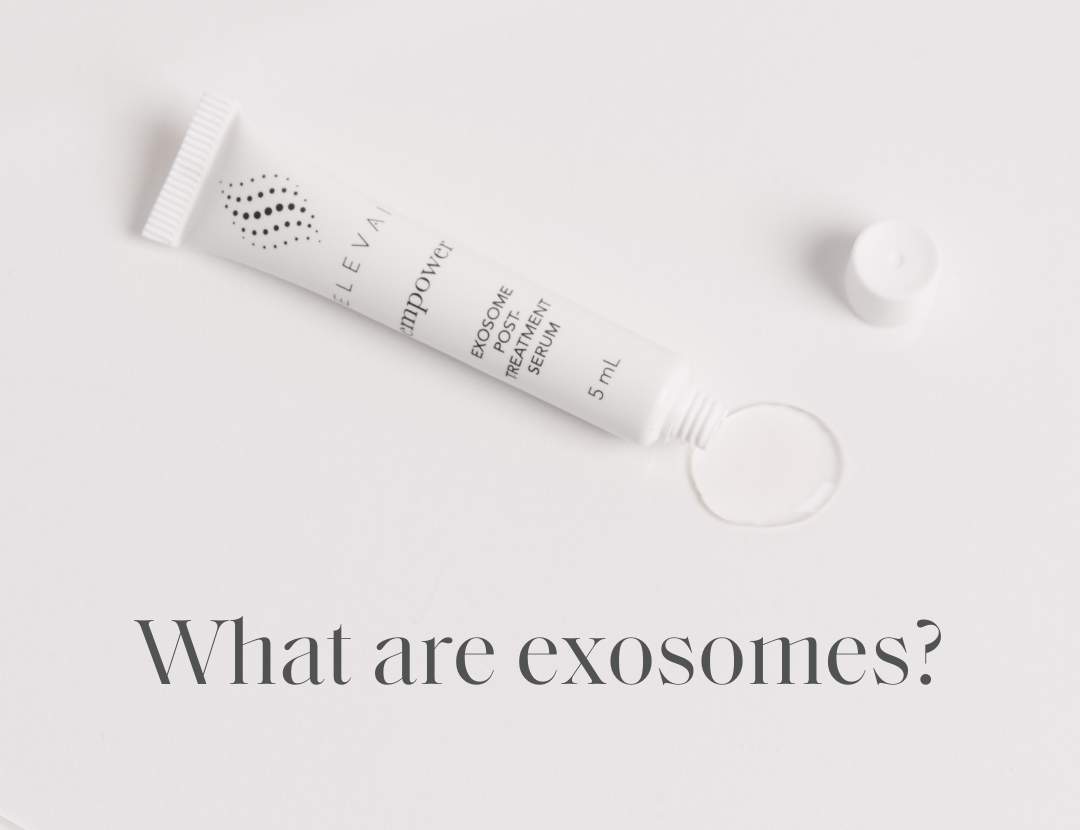Exosomes are going to change everything. In fact, I think exosomes could rewrite human life expectancy within my lifetime!
I am pleased to announce that we now have exosomes here at Advanced Rejuvenation!
What are exosomes?
Exosomes are little packets containing growth factors, cytokines and other peptides, lipids, and pieces of RNA. These packets are sent from one cell to a target cell, enabling cells to communicate with each other. The contents of the exosomes could, for instance, tell the target cell to start producing a new protein or direct it to participate in healing a wound or even to produce inflammation.
Virtually any human cell can produce exosomes, and we are making exosomes all the time in our bodies. The exosomes that were produced in our cells when we were young were different than what we produce when we’re aged.
-
Exosomes from Young Cells:
- Rich in Growth Factors: Exosomes derived from young cells are typically abundant in growth factors, proteins, and nucleic acids. These bioactive molecules play a crucial role in stimulating cell growth, tissue repair, and regeneration.
- Healthy Cellular Components: Exosomes from young cells contain cellular components that are in better condition, with fewer damaged proteins or waste materials. This means they can deliver a cargo of healthy and functional molecules to recipient cells.
- Support for Regeneration: The presence of growth factors and other rejuvenating elements in exosomes from young cells makes them highly effective at promoting the regeneration and maintenance of healthy tissues.
-
Exosomes from Old Cells:
- Reduced Growth Factors: Exosomes from aging cells tend to have fewer growth factors and regenerative proteins. This diminished cargo can limit their ability to promote cell growth and tissue repair.
- Accumulated Cellular Waste: Older cells accumulate cellular waste products and damaged components over time. Consequently, exosomes from old cells may contain a higher proportion of waste materials, which could be detrimental to recipient cells.
- Diminished Regenerative Potential: The reduced content of growth factors and the presence of waste materials in exosomes from old cells can limit their capacity to support regeneration and repair processes.
Exosomes from old cells send messages that can actually make adjacent cells behave like old cells. And exosomes from young cells reverse the signs of aging in old cells and make them behave like young cells.
You read that right. From everything we can see under the microscope, every test of cellular function we can do, cells treated with exosomes from young cells look and act like young cells.
How Exosomes Combat Aging
Exosomes hold the power to address several key factors contributing to the aging process:
- Stimulating Cellular Regeneration: Exosomes contain growth factors and signaling molecules that can kick-start the rejuvenation of aging or damaged cells. By introducing exosomes into the body, they can trigger your own cells to repair and revitalize themselves, leading to improved skin texture and tone.
- Collagen and Elasticity: Collagen and elastin are vital proteins responsible for skin firmness and elasticity. Exosomes can encourage your body to produce more of these proteins, effectively reducing the appearance of wrinkles and fine lines.
- Reducing Inflammation: Chronic inflammation is a major driver of aging and age-related diseases. Exosomes have the potential to modulate the body’s inflammatory response, lessening the negative effects of inflammation on the aging process.
- DNA Repair: Some exosomes carry RNA molecules that support DNA repair mechanisms. This can be instrumental in preventing and reversing the cellular damage associated with aging.
Here are some examples of the power of exosomes:

58 yr old woman before and after using exosomes
In the above photos, note the improvement in wrinkling around the mouth and to our left of the mouth. The tear troughs are also improved. In addition the redness of the cheeks is much reduced, in keeping with the anti-inflammatory effects of exosomes.

Before
57 yr old with massive hyperpigmentation

AFTER exosomes, showing brighter and more radiant skin. Significant reduction in hyperpigmentation
Geeky Science about Exosomes
The information is probably more than you need to know about exosomes but I find it really interesting.
Why exosomes and not stem cells?
You may have heard of people getting stem cell infusions.
It turns out that the majority of the benefits of these infusions come from the exosomes produced by the stem cells. One week after the infusions, less than 1% of the stem cells are still alive.
Stem cell infusions have been associated with some undesirable side effects, such as clots (thrombosis), allergic reactions, transmission of infection and tumorigenicity.
Exosome preparations do not contain cells so they do not cause these side effects.
Pairing the right exosomes with the desired outcome
Exosomes are produced in virtually every human cell but some cells are better than others. A lot of research is focused on mesenchymal stem cells (MSC), which are the progenitor cells for fat, bone and cartilage. MSC can come from a variety of sources, and the source of the cells may determine what tissue their exosomes are most effective at regenerating.
For instance, exosomes from MSC from teeth (harvested when wisdom teeth are pulled) are better for regenerating nerves. Exosomes from MSC from fat were superior to those from bone marrow for reversing Alzheimer’s Disease in a rat model. Exosomes from induced pluripotent MSC’s were superior to those from synovial membranes (lining of the joints) in treating osteoarthritis.
The method of getting the exosomes to the target tissue depends on the tissue. For instance in the rat model of Alzheimer’s Disease, the exosomes were administered by inhalation, since the nose is a pretty direct route to the brain. In other cases, the exosomes have been injected directly into the target tissue, which is pretty invasive if the target tissue is the heart muscle.
More work needs to be done to determine which source will be best for each condition and the optimal method of administration.
Topically applied exosomes are the quickest to market because anything that requires injection is subjected to rigorous evaluation by Health Canada and the FDA to prove safety and efficacy. And it is easier for us to assess the effects on skin than internal organs.
Eventually, I expect that there will be exosome preparations available for many conditions that seem irreversible to us now, resulting in us having the ability to live much healthier and longer lives.
One of the issues with the source of the cells is that different tissues have different concentrations of stem cells. Thus it can be difficult to harvest enough stem cells to generate enough exosomes to treat a large number of people. In addition, some sources are difficult to get at, such as bone marrow or teeth.
The exosomes that we are offering here at Advanced Rejuvenation come from umbilical cords purchased from FDA facilities. Thus the umbilical cords were sourced ethically. And cells from umbilical cords are age zero, so the ultimate in young cells and amazing at rejuvenating our cells.
Laboratory issues
Apart from the issues associated with ethically sourcing the stem cells that will provide the exosomes, the culture and handling to the stem cells requires great care and attention.
As I have described in another post, the cells are cultured in cycles: a few cells are placed in the culture medium, are grown to cover the surface of the medium and then harvested, with a few cells saved to start the next culture.
The issue with stem cells is that they can mature in culture, meaning MSC’s could mature into fat cells, bone cells or cartilage cells. These mature cells would not produce the same exosome contents as their stem cell progenitors.
Thus limits must be placed on the number of growth cycles that a given set of cells goes through, and each batch must be screened to be sure that the cells remained immature stem cells.
The exosomes produced by the stem cells have to be quantified and proven to have the contents that we want for the intended application.
The exosomes have to be supplied to the end user in a form that prevents contamination and maintains potency until the product is used. For instance, our exosomes are provided in single-use tubes, and once open, they have to be used within 24 hours.
All of this leads me to say that you want exosomes that are produced by a company that has experts and expertise in stem cell methodologies and exosomes. And it is an expensive process to produce exosomes that will do what we want them to do.
If you find cheap exosomes on the market, you shouldn’t expect that they will be very effective, and the results they produce (if any), will vary from batch to batch.
I can’t wait to see all of the new therapies that become available using exosomes. In the meantime, we get to use them to rejuvenate our faces.
Dr. Rose Jeans
